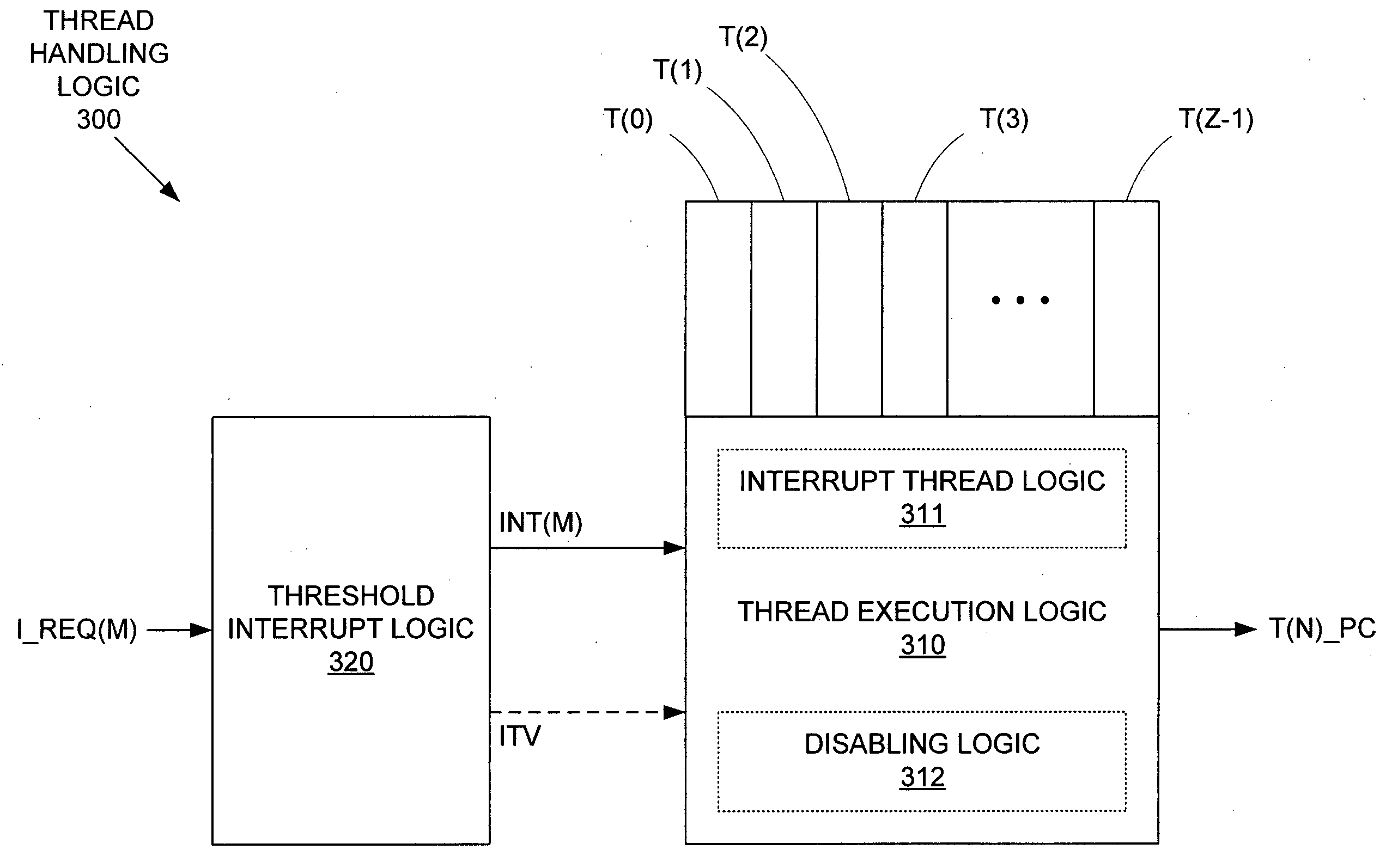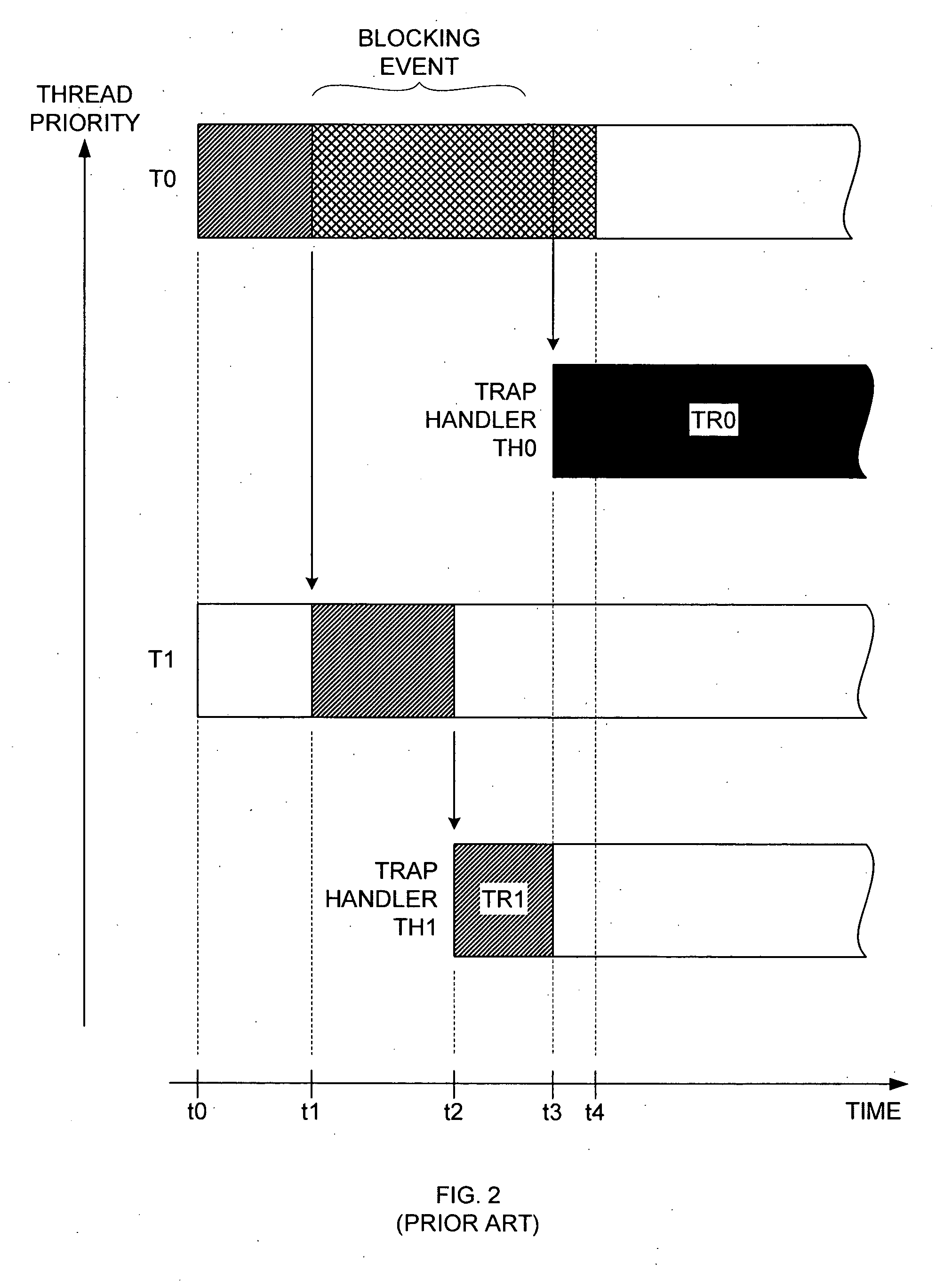Interrupt and trap handling in an embedded multi-thread processor to avoid priority inversion and maintain real-time operation
a multi-thread processor and interrupt technology, applied in multi-programming arrangements, instruments, computations using denominational number representations, etc., can solve problems such as system failure, multi-threaded systems can encounter difficulties with trap handling, and conventions of real-time embedded systems can conflict with the desired operating characteristics of multi-threaded code, so as to prevent unintended trap re-entry
- Summary
- Abstract
- Description
- Claims
- Application Information
AI Technical Summary
Benefits of technology
Problems solved by technology
Method used
Image
Examples
Embodiment Construction
[0026]FIG. 3 shows a simplified block diagram of thread handling logic 300 for a multi-threaded real-time embedded system (not shown), according to an embodiment of the invention. Thread handling logic 300 is based on multi-threaded code and includes thread execution logic 310 for managing the execution of a quantity Z of active threads (T(0) through T(Z-1)) and threshold interrupt logic 320 for directing the processing of interrupts. Thread execution logic 310 assigns each active thread an execution priority value (similar to the thread priority values described with respect to FIGS. 1 and 2). During normal operation (i.e., non-interrupt / trap operation) of thread handling logic 300, thread execution logic 310 executes the highest priority unblocked active thread (thread T(N) for discussion purposes) by providing its thread program counter T(N)_PC to an instruction fetch unit (not shown). After each instruction fetch, thread execution logic 310 increments thread program counter T(N)...
PUM
 Login to View More
Login to View More Abstract
Description
Claims
Application Information
 Login to View More
Login to View More - R&D
- Intellectual Property
- Life Sciences
- Materials
- Tech Scout
- Unparalleled Data Quality
- Higher Quality Content
- 60% Fewer Hallucinations
Browse by: Latest US Patents, China's latest patents, Technical Efficacy Thesaurus, Application Domain, Technology Topic, Popular Technical Reports.
© 2025 PatSnap. All rights reserved.Legal|Privacy policy|Modern Slavery Act Transparency Statement|Sitemap|About US| Contact US: help@patsnap.com



